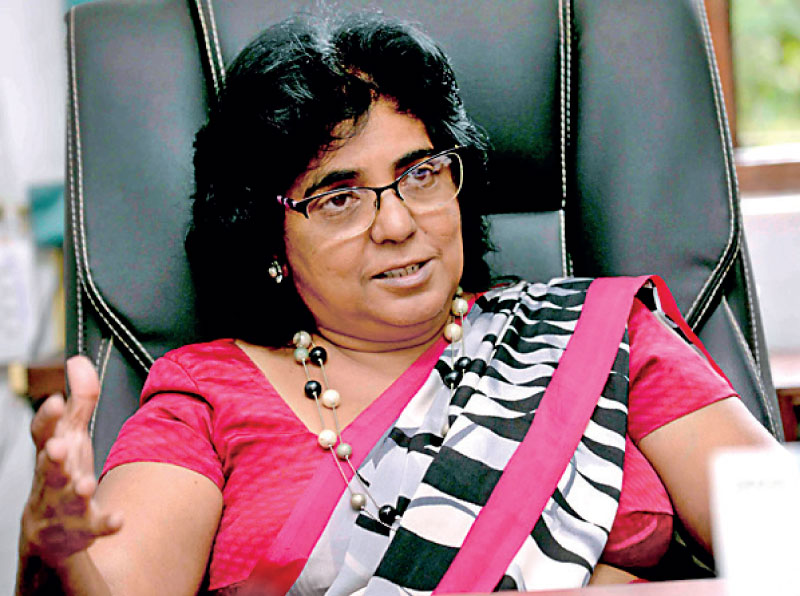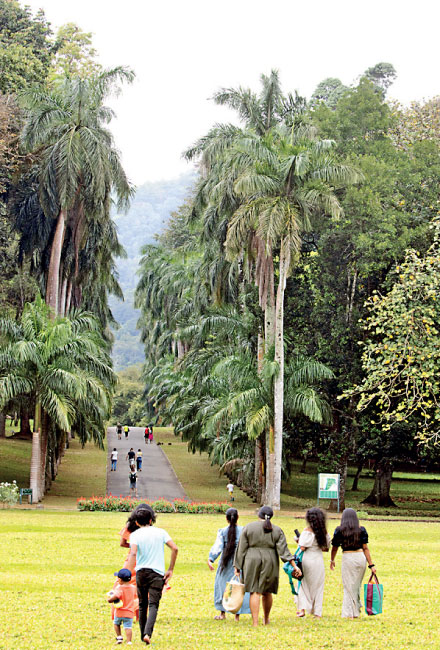Wednesday Jan 07, 2026
Wednesday Jan 07, 2026
Friday, 24 March 2023 01:10 - - {{hitsCtrl.values.hits}}

Department of National Botanic Gardens DG Dr. Shelomi Krishnarajah

Peradeniya Botanic Gardens

A botanic illustration by Haramanis de Alwis
By Chandani Kirinde
|
Dried plant specimens
|
The country’s botanic gardens attract thousands of both local and foreign visitors each year with the Peradeniya Botanic Gardens taking pride of place as the best and most visited garden. Last year, when the Gardens celebrated its bicentenary, many activities were undertaken to draw public attention to the need to conserve nature and the Island’s unique flora which is coming under growing strain with the increase in population and large-scale development projects that leads to clearing of vast tracts of forests and jungles.
The Department of National Botanic Gardens, which comes under the Ministry of Tourism, plays an essential role in both preserving vast extents of natural habitat in areas demarcated as botanic gardens and also educating the public on how everyone can start in their own gardens to learn more about the country’s unique flora. The Director General of the Department Dr. Shelomi Krishnarajah in an interview with the Daily FT spoke on the importance of botanic gardens and future plans to extend its activities. Here are excerpts of the interview:
Q: What are the botanic gardens that come under the purview of your department?
There are five botanical gardens of which the gardens at Peradeniya, Hakgala, Henarathgoda (Gampaha) were started during the early part of 19th century by the British to conduct experiments on exotic plants and explore plant wealth in the island. Two new botanic gardens were established in Mirijjawela, Hambantota for conservation of dry zone plants and in Avissawella for conservation of wet zone plants. In addition to these a National Medicinal Plant Garden was established in 1950s at Ganewatta to promote conservation, sustainable use and management of medicinal plants in Sri Lanka.
Q: What is the primary role of the botanic gardens?
Our main activity is to conserve plants and provide opportunities for the public to study, sustainably conserve, and admire plant resources in natural and manmade environments. Among the activities we are engaged in are educating and training personnel in scientific research with contributions to biodiversity, conservation and public education and floriculture. We are also responsible for the maintenance and development of the Botanic Gardens and its allied units.
Q: Peradeniya Botanic Garden celebrated 200 years last year. How successful were the programs you had scheduled to coincide with this landmark celebration?
On the whole it was successful but due to the heavy rains and economic issues, we had to reschedule some programs for this year. We are satisfied with the public interest in our efforts. Our future plans for Peradeniya include setting up a state-of-the-art laboratory and research centre with genetic engineering facilities. The centre will be constructed at a cost of Rs. 250 million and will assist in more authentic characterisation of plans. We also have around 5,000 florists island-wide working with the Department and a program to register more florists will be implemented in the future.
Q: Visitors to botanic gardens dropped drastically due to the pandemic. What is the situation now?
Prior to the pandemic, annually we had around two million visitors to all the gardens but this was impacted due to the pandemic as well as the economic crisis last year. But we are seeing a steady increase in numbers of visitors since late last year and hope for a full recovery this year.
Q: What future plans do you have for the Department?
We are working on setting up a mangrove garden in Pinnaduwa in Galle. We have already earmarked three acres of land for the purpose and are in the process of acquiring the land by paying compensation, etc. We have to conserve plants in their natural habitat as much as possible as increase in pollution and large scale development projects lead to the loss of such habitants. Hence this latest project is to conserve the mangroves.
Q: What is the role the public can play in conserving and learning about the country’s flora?
People can start in their own gardens. They can plant trees and learn about them. They can visit a botanic garden and learn about the plants. We have many short-term programs for the public so that those interested can join them and learn how they can contribute to safeguarding the wonderful and unique flora in our country.
